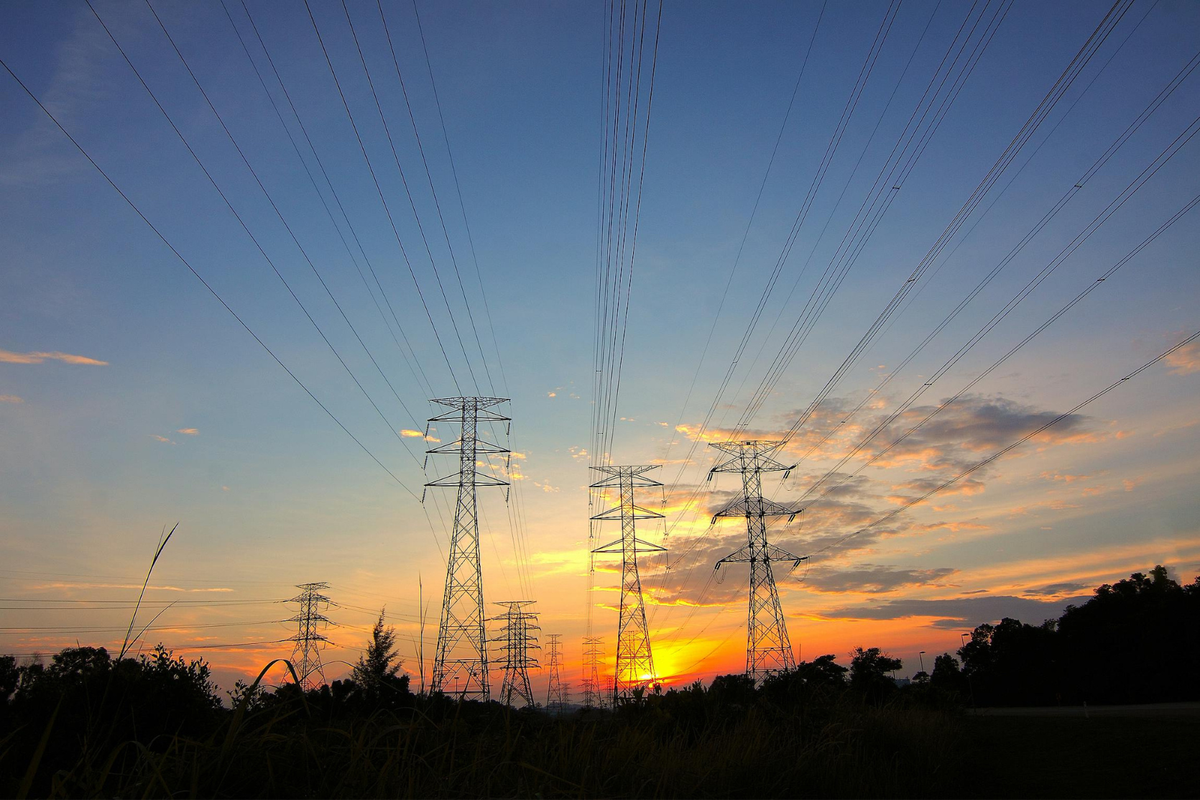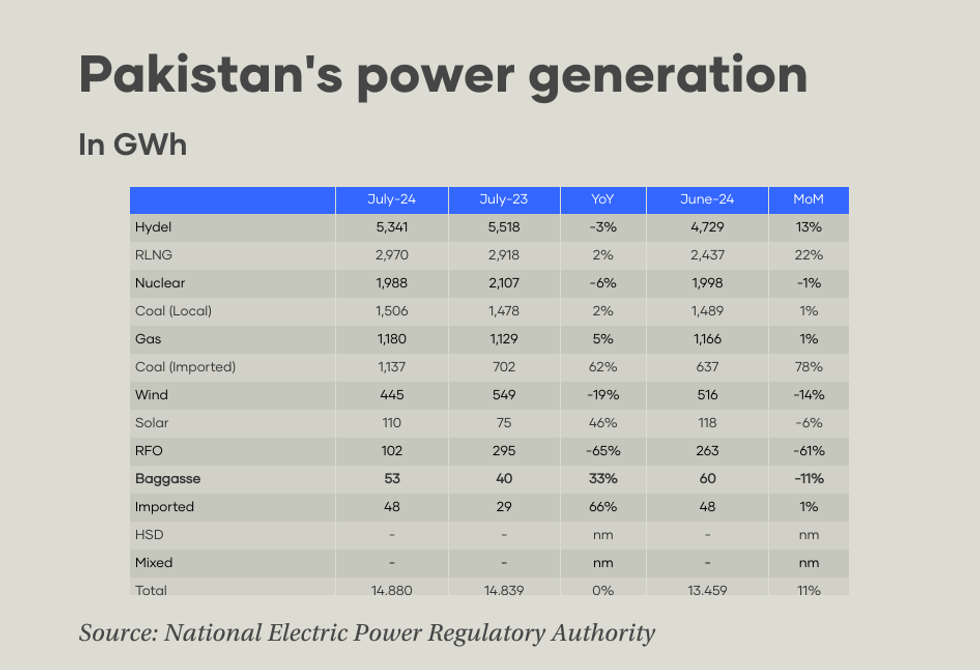Rao Aamir

Pakistan's power generation in July stood at 14,880 gigawatt-hours (GWh)
Pexels
Pakistan's power generation in July stood at 14,880 gigawatt-hours (GWh), 3% lower than the target, according to data released by the National Electric Power Regulatory Authority (NEPRA).
This shortfall is expected to increase the Capacity Purchase Price (CPP) per kilowatt-hours (kWh), which will be passed on to consumers in the coming months.
Power generation in July remained stable on a YoY basis and was 11% higher than last month.
Imported coal's share in power generation rose to 8%, producing 1,137 GWh, which is 62% higher than in July 2023 and 78% higher than in June. Last year's lower generation on imported coal was due to coal import issues stemming from the country's low foreign exchange reserves.
Meanwhile, hydel-based generation accounted for 36% of the total in July, producing 5,341 GWh compared to 5,518 GWh in July 2023. RLNG-based generation was the second-largest source, producing 2,970 GWh, which is 2% higher than in July 2023 and 22% higher than June.
Moreover, nuclear generation in July was 6% lower than the previous year at 1,988 GWh and was down 1% from June. Wind-based power generation declined by 19% YoY to 445 GWh in July, compared to 549 GWh in July 2023.
Solar-based power generation increased by 46% YoY to 110 GWh in July, compared to 75 GWh in July 2023. However, it was down by 6% compared to June.








Comments
See what people are discussing